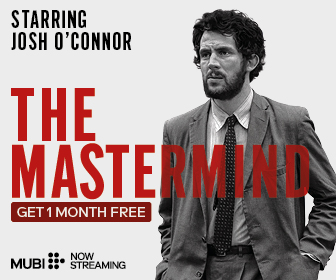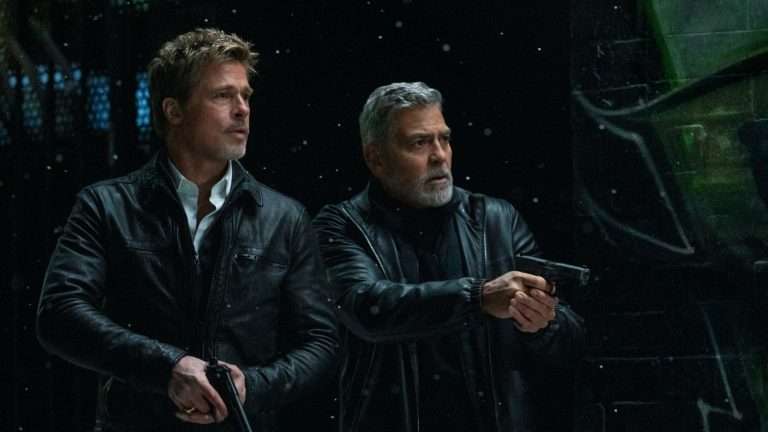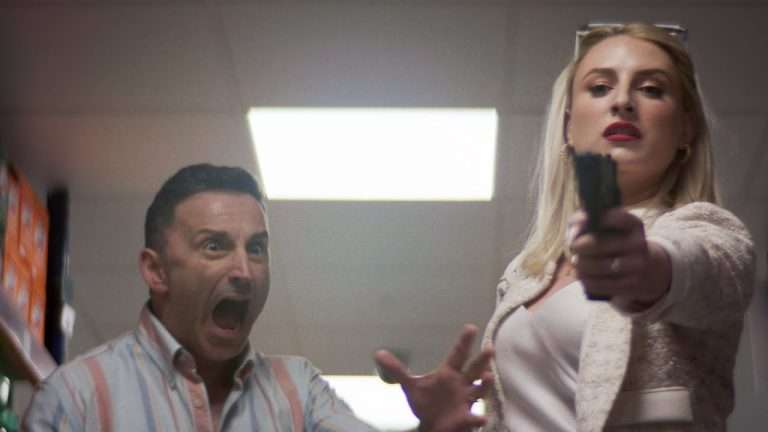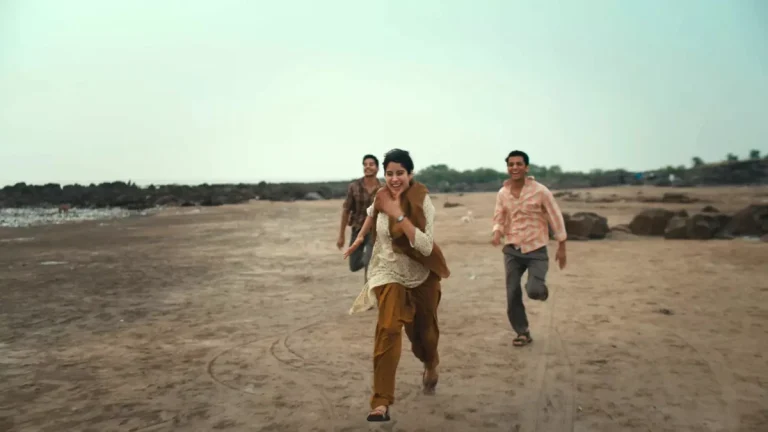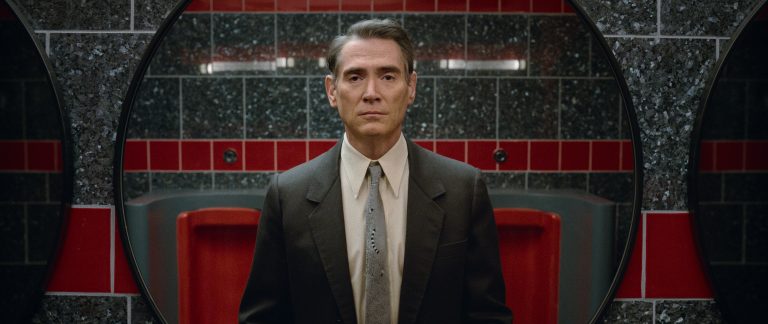The Hand That Rocks the Cradle (2025) reinterprets the psychological horror of its 1992 namesake as a brooding psychological thriller about guilt, trauma, and the treacherous pull of emotional replacement. In Michelle Garza Cervera’s reimagining, domestic horror and generational pain intertwine as two women become bound by secrecy, turmoil, and, ultimately, the shared burden of survival. The film suggests that trauma is never fully vanquished—it merely changes hands, passed along from one soul to another until someone dares to break the chain.
Spoilers Ahead
The Hand That Rocks the Cradle (2025) Plot Summary & Movie Synopsis:
Caitlyn Morales is a distinguished attorney and the mother of two young girls: Emma and newborn Josie. She has a loving husband (Miguel), and everything seems to be perfect. However, signs of deterioration have started to form on Caitlyn’s mask of perfection. Caitlyn is increasingly finding it challenging to juggle the work of an attorney and a mother while also contending with an unnamed mental health condition that has rendered her emotionally distant.
When Caitlyn’s client, Polly Murphy, a social worker on the brink of becoming homeless, re-enters her life and proposes she become a nanny, Caitlyn reluctantly agrees. Polly quickly becomes deeply involved with caring for Josie, achieves a bond with Emma, and charms Miguel with her patience.
Why Does Polly Poison Caitlyn’s Family?
The poisoning incident marks the first major crack in Caitlyn’s world. After serving dinner one evening, Caitlyn and her children fell violently ill. The culprit is Polly, who secretly spikes their food, but her motive isn’t immediate harm. Instead, it’s psychological erosion. By causing subtle chaos that can’t be traced, Polly begins dismantling Caitlyn’s sense of control. She positions herself as the one stable, nurturing presence in the home, the kind of caregiver Caitlyn is terrified she can’t be. This tactic mirrors the film’s larger theme: domination through doubt. Polly doesn’t want to kill Caitlyn. She wants Caitlyn to destroy herself.
How Does Polly Undermine Caitlyn’s Sanity?
Now that Polly is in the guest house, her manipulation is deliberate. She switches Caitlyn’s pills with ones that are methamphetamine, having the same shape and color. It engenders chaos. Caitlyn is unruly and overly suspicious. Her anxiety escalates, and Miguel begins to question her integrity. Every emotional outburst, every instance of jealousy at Polly’s relationship with Emma is ‘evidence’ of Caitlyn’s instability. This is a classic example of gaslighting – one makes an individual doubt themselves until they lose all credibility to reality. Polly is not merely a usurper of Caitlyn’s household, but also of her identity as a wife and mother.
Who is Polly Really?
The turning point comes when Caitlyn’s neighbor, Stewart, conducts a background check on Polly and discovers her true identity. Polly’s real name is Rebecca, and she shares a horrific childhood history with Caitlyn, whose real name, we learn, was Jennifer.
Years ago, Jennifer set fire to her own house, killing Rebecca’s parents and baby sister. Jennifer was given a new identity and a second chance, while Rebecca, orphaned and traumatized, was thrown into abusive foster homes. This revelation reframes the entire story. Polly isn’t an opportunistic criminal; she’s a survivor consumed by the need for retribution, not just for her family’s death, but for the injustice of Jennifer’s redemption.
Why Does Polly Kill Stewart?
Stewart’s murder is the moment Polly’s fragile morality disintegrates. When he confronts her, urging her to forgive Caitlyn, Polly realizes that forgiveness would mean relinquishing the power she’s finally gained. Her rage isn’t only at Caitlyn but at a system that saved Caitlyn and discarded her. Beating Stewart to death with a baseball bat, she symbolically destroys the one person who still believes she can be redeemed. It’s not just revenge anymore; it’s identity preservation. Without her hatred for Caitlyn, Polly has nothing left.
Why Does Miguel Turn Against Caitlyn?
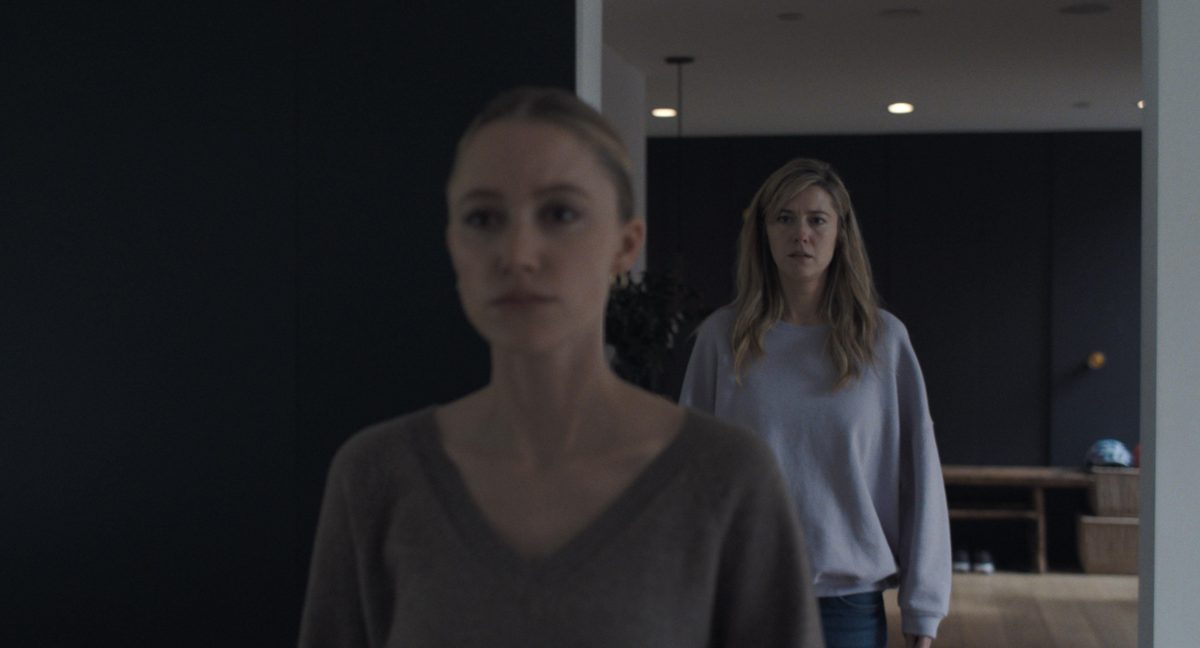
After Caitlyn attacks Polly in a fit of fury, even striking her daughter Emma by accident, Miguel’s trust shatters. From his perspective, Caitlyn’s paranoia and aggression confirm everything he’s feared about her mental decline. By contrast, Polly appears calm, maternal, and wounded, the perfect foil. Miguel’s decision to file domestic violence charges isn’t cruelty; it’s the logical next step in a carefully constructed illusion. Caitlyn is now completely alone, stripped of her family, her home, and her credibility, precisely where Polly wanted her.
What is the Real Truth About the Fire?
The film’s emotional core lies in Caitlyn confronting Polly, as it finally reveals that the fire was caused by desperation, not malice. Caitlyn (Jennifer at that time) had started the fire to escape from Polly’s father, who had been sexually abusing both girls. This complicates the film’s moral axis. While the fire ruined Polly’s life, it also freed her from her abuser. That’s a horrific paradox. Polly’s disbelief is warranted; the truth takes away the simple narrative she has built her life around. If Caitlyn is not a monster, then Polly’s crusade for meaning collapses. Her vengeance, her suffering, all become senseless.
Why Does Polly Try to Take Over Caitlyn’s Life?
In the final act, Polly’s descent into madness is complete. She dresses in Caitlyn’s clothes, styles her hair the same way, and acts as mother to Emma and Josie. This isn’t just imitation, it’s reclamation. Polly wants to overwrite Caitlyn’s existence, to erase her pain by inhabiting the life she believes should have been hers. Her obsession turns literal: if Caitlyn ‘stole’ her family once, Polly will now steal Caitlyn’s family. But when Caitlyn confronts her, the two women’s shared pain surfaces. Caitlyn’s apology is sincere, but Polly’s wound is too deep. Forgiveness would mean facing her own emptiness, something she can’t bear.
What Happens in the Final Battle?
Their confrontation explodes into violence. When Polly stabs Caitlyn, she declares her intent to ‘raise your children as mine.’ The line crystallizes her madness. The battle concludes with Caitlyn shoving Polly headfirst through a glass window. This moment is literal as well as symbolic, destroying the hope that either woman will be able to go back to their previous life. As Caitlyn escapes, Polly lashes out at the car, resulting in a crash that ends in injury and death to Polly. In her last moment, she finally perceives Caitlyn’s genuine regret and the burden she has carried. Caitlyn’s decision to offer compassion as Polly dies is an incredible act of humanity that ends the cycle of revenge.
The Hand That Rocks the Cradle (2025) Movie Ending Explained:
What Does the Fire Symbolize?
The recurring symbol of fire represents transformation through destruction. For Caitlyn, it was an act of escape and sin, while for Polly it represented loss and rebirth through rage. Ultimately, Caitlyn’s reflection in the fire signifies recognition of pain, rather than purification. She realizes that she and Polly were both sides of the same scar: one burned to live and the other burned to remember. The final irony is that Caitlyn, who escaped a fire caused by abuse, must now face a fire within: the guilt, the sorrow, and memories of a girl she would never save.
Essentially, “The Hand That Rocks the Cradle” (2025) is not just a revenge tale; it is also a meditation on the inheritance of trauma. Caitlyn and Polly are not adversaries, but mirrors to each other’s pain. One was seeking repentance, and the other, revenge. The same fire burned both. And, when the flames die down, what is left is not peace; it is the echo of a child retelling a history. The past, just like the fire, does not die easily.
The film concludes with Caitlyn gazing into a fire, the only common element that destroys and defines both women. The fire is rooted in the dual symbolism of destruction and renewal. The implication now is that healing can only take place by embracing our traumas rather than repressing them.
However, with the final glance at Emma, a dark possibility reemerges. Emma, unaware and unconsciously regurgitating Polly’s mannerisms and speech, retells one of Polly’s stories to console Josie. The implications here are visceral. Trauma doesn’t leave or die with a person. Trauma passes along circumstantially, without provocation, through narrative, mimicry, storytelling, and mannerisms. Polly is dead, but she lives on in the children’s psyches.

